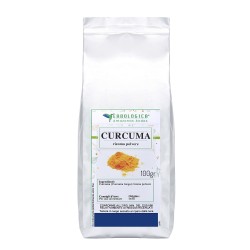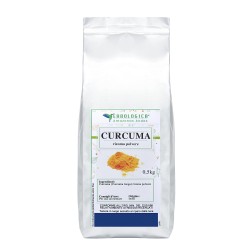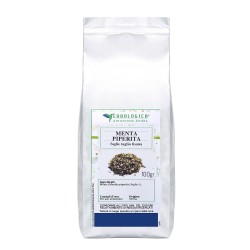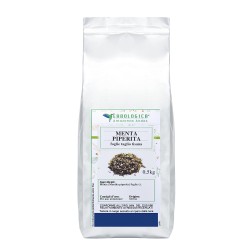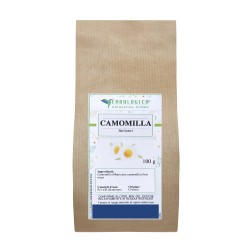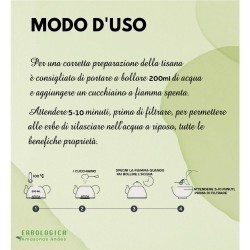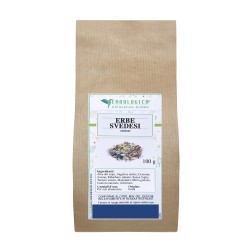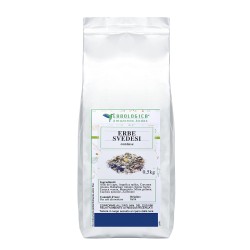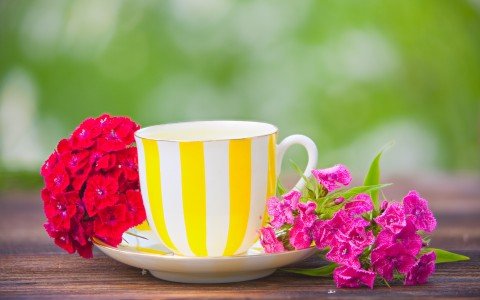
Dal giardino al bicchiere: Svelare le piante medicinali che trasformano gli infusi e i liquori tradizionali".
Entrate in un mondo in cui i poteri curativi della natura incontrano l'arte della miscelazione.
In questo viaggio affascinante, ci addentriamo nel regno delle piante medicinali che hanno incantato i palati più esigenti del mondo.
Da rimedi erboristici secolari a intrugli innovativi, il movimento "dal giardino al bicchiere" ha conquistato l'industria delle bevande.
Svelando i segreti degli infusi e dei liquori tradizionali, esploriamo le proprietà trasformative di questi straordinari prodotti botanici.
Unisciti a noi per svelare il potenziale nascosto della natura, rivelando il delicato equilibrio di sapori e benefici terapeutici che rendono queste bevande davvero straordinarie.
Che siate intenditori esperti o semplicemente curiosi di conoscere l'intersezione tra gusto e benessere, preparatevi a lasciarvi conquistare dall'inebriante mondo degli elisir dal giardino al bicchiere.
Preparatevi ad assaporare l'essenza della natura in ogni sorso, mentre intraprendiamo un viaggio alla scoperta dei paesaggi lussureggianti e delle tradizioni secolari che hanno dato forma a queste straordinarie bevande.
Introduzione alle piante medicinali nelle infusioni e nei liquori
Le piante medicinali sono state utilizzate per secoli nella preparazione di bevande.
L'uso delle piante per scopi medicinali risale alle antiche civiltà, dove gli erboristi e i guaritori sfruttavano le proprietà curative delle piante per trattare varie malattie.
Oggi, l'interesse per le piante medicinali è tornato in auge, con un crescente numero di produttori di liquori e bevande che sfruttano i benefici di queste piante per creare bevande uniche e salutari.
Storia dell'uso delle piante medicinali nelle bevande
L'uso delle piante medicinali nelle bevande risale a tempi antichi.
Le antiche civiltà come gli Egizi, i Greci e i Romani utilizzavano piante come la menta, la camomilla e la salvia per preparare bevande curative.
Queste bevande erano spesso utilizzate per trattare disturbi dello stomaco, mal di testa e problemi digestivi.
Nel corso dei secoli, l'uso delle piante medicinali nelle bevande si è diffuso in tutto il mondo, con ogni cultura che ha sviluppato le proprie ricette e tecniche per sfruttare al massimo le proprietà curative delle piante.
Benefici del consumo di piante medicinali nelle infusioni e nei liquori
Il consumo di piante medicinali nelle infusioni e nei liquori offre numerosi benefici per la salute.
Le piante medicinali contengono composti attivi che possono avere effetti positivi sul corpo umano.
Ad esempio, alcune piante possono avere proprietà antinfiammatorie, antiossidanti o calmanti.
Il consumo regolare di bevande a base di piante medicinali può aiutare a migliorare il sistema immunitario, ridurre lo stress e promuovere una buona salute generale.
Inoltre, molte piante medicinali sono ricche di vitamine, minerali e altre sostanze nutritive che possono contribuire a una dieta equilibrata.
Piante medicinali popolari utilizzate nelle infusioni e nei liquori
Le piante medicinali utilizzate nelle infusioni e nei liquori possono variare a seconda delle tradizioni regionali e delle preferenze personali.
Tuttavia, ci sono alcune piante medicinali popolari che sono ampiamente utilizzate in tutto il mondo per creare bevande aromatiche e salutari.
Ecco alcune delle piante medicinali più comuni utilizzate nelle infusioni e nei liquori:
Menta
La menta è una pianta aromatica che viene utilizzata da secoli per creare bevande rinfrescanti e digestive.
La menta ha proprietà digestive e può aiutare a ridurre il gonfiore e il disagio dopo un pasto pesante. Inoltre, la menta ha un aroma piacevole e rinfrescante che la rende un ingrediente popolare per molti cocktail e bevande estive.
Camomilla
La camomilla è una pianta dalle proprietà calmanti e rilassanti.
L'infuso di camomilla è spesso consumato prima di andare a dormire per favorire il sonno.
La camomilla ha anche proprietà antinfiammatorie e può aiutare a lenire l'irritazione della pelle o delle mucose.
Salvia
La salvia è una pianta dalle proprietà antiossidanti e antinfiammatorie.
L'infuso di salvia può essere utilizzato per alleviare il mal di gola o come rimedio per la tosse.
Inoltre, la salvia ha un aroma distintivo che può conferire alle bevande un sapore unico e aromatico.
Ricette tradizionali e tecniche per infondere le piante medicinali
Le ricette tradizionali per infondere le piante medicinali nelle bevande sono state tramandate di generazione in generazione.
Queste ricette spesso prevedono l'uso di ingredienti freschi e di alta qualità per ottenere il massimo beneficio dalle piante medicinali.
Ecco alcune delle tecniche più comuni utilizzate per infondere le piante medicinali nelle bevande:
Infusione a caldo
L'infusione a caldo è il metodo più comune per infondere le piante medicinali nelle bevande.
Questo metodo prevede il versamento di acqua calda o di una miscela di acqua e alcol sulle piante medicinali e lasciare in infusione per un determinato periodo di tempo.
Durante l'infusione, i composti attivi presenti nelle piante vengono estratti nell'acqua o nell'alcol, creando una bevanda aromatica e salutare.
Macerazione
La macerazione è un metodo di infusione che prevede l'immergere le piante medicinali in un liquido, come l'alcol, e lasciarle in infusione per un periodo di tempo prolungato.
Durante la macerazione, l'alcol estrae i composti attivi dalle piante, creando una bevanda con un sapore intenso e una concentrazione più elevata di principi attivi.
Estrazione a freddo
L'estrazione a freddo è un metodo di infusione che prevede l'utilizzo di acqua fredda o di un liquido a bassa temperatura per estrarre i composti attivi dalle piante medicinali.
Questo metodo richiede più tempo rispetto all'infusione a caldo o alla macerazione, ma può creare bevande con un sapore più delicato e un profilo aromatico più complesso.
Esplorare i benefici per la salute delle diverse piante medicinali
Ogni pianta medicinale ha proprietà uniche e può offrire benefici specifici per la salute umana.
Ecco alcuni esempi di piante medicinali e dei loro benefici per la salute:
Curcuma
La curcuma è una radice dalle proprietà antinfiammatorie e antiossidanti.
La curcumina, il principale composto attivo della curcuma, può aiutare a ridurre l'infiammazione nel corpo e può avere effetti positivi sulla salute del cuore e del cervello.
Zenzero
Lo zenzero è una radice dalle proprietà digestive e antinausea.
Lo zenzero può aiutare a ridurre il disagio digestivo, come la nausea o il gonfiore. Inoltre, lo zenzero ha proprietà antinfiammatorie e può contribuire a ridurre l'infiammazione nel corpo.
Melissa
La melissa è una pianta dalle proprietà calmanti e rilassanti.
L'infuso di melissa può aiutare a ridurre lo stress e l'ansia e può favorire il sonno. Inoltre, la melissa ha proprietà antivirali e può aiutare a combattere il raffreddore e l'influenza.
Come incorporare le piante medicinali nelle tue infusioni e nei tuoi liquori fatti in casa
Incorporare le piante medicinali nelle tue infusioni e nei tuoi liquori fatti in casa è un modo fantastico per sfruttare i benefici per la salute di queste piante e creare bevande uniche e personalizzate.
Ecco alcuni consigli su come iniziare:
Scegliere le piante medicinali giuste
Scegliere le piante medicinali giuste per le tue infusioni e i tuoi liquori dipende dai tuoi gusti personali e dagli effetti desiderati.
Ad esempio, se desideri una bevanda rilassante, potresti optare per la camomilla o la melissa.
Se invece cerchi una bevanda con proprietà digestive, potresti provare la menta o lo zenzero.
Utilizzare ingredienti freschi e di alta qualità
Quando si utilizzano piante medicinali per le infusioni e i liquori, è importante utilizzare ingredienti freschi e di alta qualità.
Le piante medicinali fresche possono offrire un aroma e un sapore più intensi, oltre a contenere una maggiore quantità di composti attivi.
Assicurati di acquistare le piante da fonti affidabili e di utilizzarle il più presto possibile dopo l'acquisto.
Sperimentare con le proporzioni e i tempi di infusione
Sperimentare con le proporzioni e i tempi di infusione è fondamentale per ottenere il risultato desiderato.
Alcune piante medicinali richiedono un tempo di infusione più lungo per estrarre i composti attivi, mentre altre possono richiedere una quantità maggiore di pianta per ottenere un sapore intenso.
Prova diverse combinazioni e fai attenzione ai risultati per trovare la ricetta perfetta per le tue infusioni e i tuoi liquori fatti in casa.
La crescente tendenza degli infusioni e liquori artigianali e di qualità
Negli ultimi anni, c'è stata una crescente tendenza verso le infusioni e i liquori artigianali e di qualità. I consumatori sono sempre più interessati a bevande che utilizzano ingredienti naturali e sani, come le piante medicinali.
I produttori di liquori e bevande stanno rispondendo a questa domanda creando prodotti unici e di alta qualità che sfruttano i benefici delle piante medicinali.
L'importanza della tracciabilità e della sostenibilità
Con l'aumento della domanda di infusioni e liquori artigianali, è diventato sempre più importante garantire la tracciabilità e la sostenibilità degli ingredienti utilizzati.
I consumatori sono interessati a conoscere l'origine delle piante e le pratiche agricole utilizzate nella loro coltivazione.
I produttori di infusioni e liquori artigianali stanno rispondendo a questa domanda fornendo informazioni dettagliate sulla provenienza degli ingredienti e sulle pratiche sostenibili utilizzate nella loro produzione.
Innovazione nel settore delle infusioni e dei liquori
L'industria delle infusioni e dei liquori sta vivendo un periodo di grande innovazione.
I produttori stanno sperimentando nuove tecniche di infusione e combinando ingredienti insoliti per creare bevande uniche e sorprendenti.
Questa innovazione offre ai consumatori una vasta gamma di scelte e li invita a esplorare nuovi sapori e profili aromatici.
Dove trovare e acquistare piante medicinali per infusioni e liquori fatti in casa
Se desideri iniziare a creare le tue infusioni e i tuoi liquori fatti in casa utilizzando piante medicinali, ci sono diverse opzioni per trovare e acquistare le piante di cui hai bisogno.
Di questi tempi si possono trovare erbe officinali di qualità e certificata on line.


